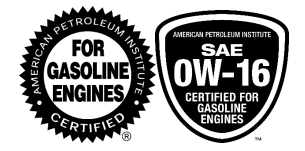The much heralded, and much delayed, ILSAC GF-6 engine oil specification is finally approved and a launch date revealed. Meanwhile Japanese OEMs push specs harder.
May 1st 2020 is now the official licensing date for the long-awaited ILSAC GF-6A and GF-6B motor oil specifications, along with the complementary API SP specs. The last piece of arguably the most complex specification puzzle to date was finally put in place at the end of June 2019, when the ballots for the Sequence IVB test went through APIs Lubricants Group unchallenged.
It was the IVB test that had apparently proved the most difficult to agree, causing further delays the already behind-schedule specifications.Once approved, with some provisos, the final part of the overall process could be completed and the licensing date finally announced, some nine years after the process first started.
The Eighteenth Edition of the API’s Engine Oil Licensing and Certification System (EOLCS) API 1509 was also published in June, although an amended version was subsequently released on 10 July . This not only revealed the full details of the specification and its implementation dates, but also the new certification ‘starburst’ and ‘shield’ marks for product labelling.
 The shield is designed for the new SAE 0W-16 viscosity engine oils, which have been developed since the previous ILSAC GF-5 standards were agreed.
The shield is designed for the new SAE 0W-16 viscosity engine oils, which have been developed since the previous ILSAC GF-5 standards were agreed.
As well as the EOLCS document itself, the new specification is included on ILSAC’s oilspecifications.org website.
Meanwhile, Japan is set to introduce is own ultra-low viscosity passenger engine oil specification in October 2019. Named GLV-1, it includes even lower viscosity standards than those permitted in ILSAC GF-6A. These include SAE 0W-12 and even 0W-8 oils for some vehicle models.; According to Lube Report Asia, the new specification is also likely to have an impact on base oil production, with increased demand for Group III stock which brings a higher viscosity index. Lube Report also comments that the apparently independent oil spec is not uncommon, with Japanese OEMs preferring to develop their own standards, but usually in partnership with ILSAC and API.
The GF-6 announcement has drawn a collective sigh of relief from the lubes industry, with many companies such as Lubrizol already well prepared for the new specifications, along with the likes of Chevron Oronite, Pennzoil and Total who recently announced its GF-6B compliant Quartz 9000 Future XT 0W-16 product.
Although API describes EOLCS as: “ a voluntary licensing and certification programme that authorizes engine oil marketers that meet specified requirements to use the API Engine Oil Quality Marks”, the reality is that few, if any, major lubricants producers selling into the US market are not on the API membership list.
The licencing process requires lubes producers and their marketing divisions to demonstrate any labelled products meet the GF-6 test standards and are registered using the APIs online portal.
The API’s Director of Product Programs, Kevin Ferrick, stated: “API developed these new performance standards in response to a request from automakers to introduce more robust engine oils that would be capable of meeting the needs of current and future gasoline engines.ILSAC GF-6A, GF-6B and API SP represent the fruits of the oil, additive, and automobile industries’ labors to introduce such essential products for the people who use these vehicles every day.”
OEMs, dealerships, independent workshops and consumers are likely to see marketing activity around the new specification ramp up significantly over the next 10 months.